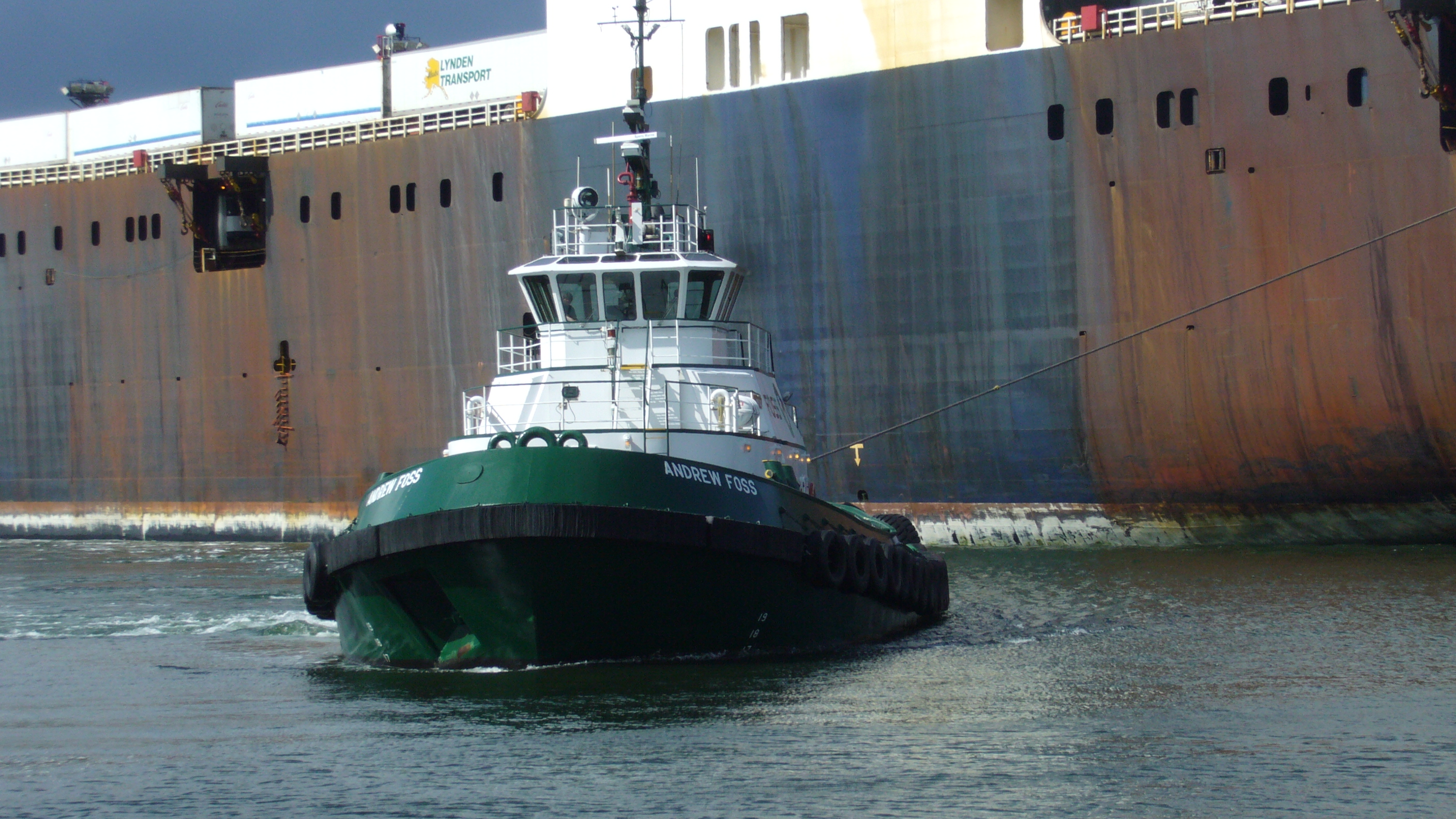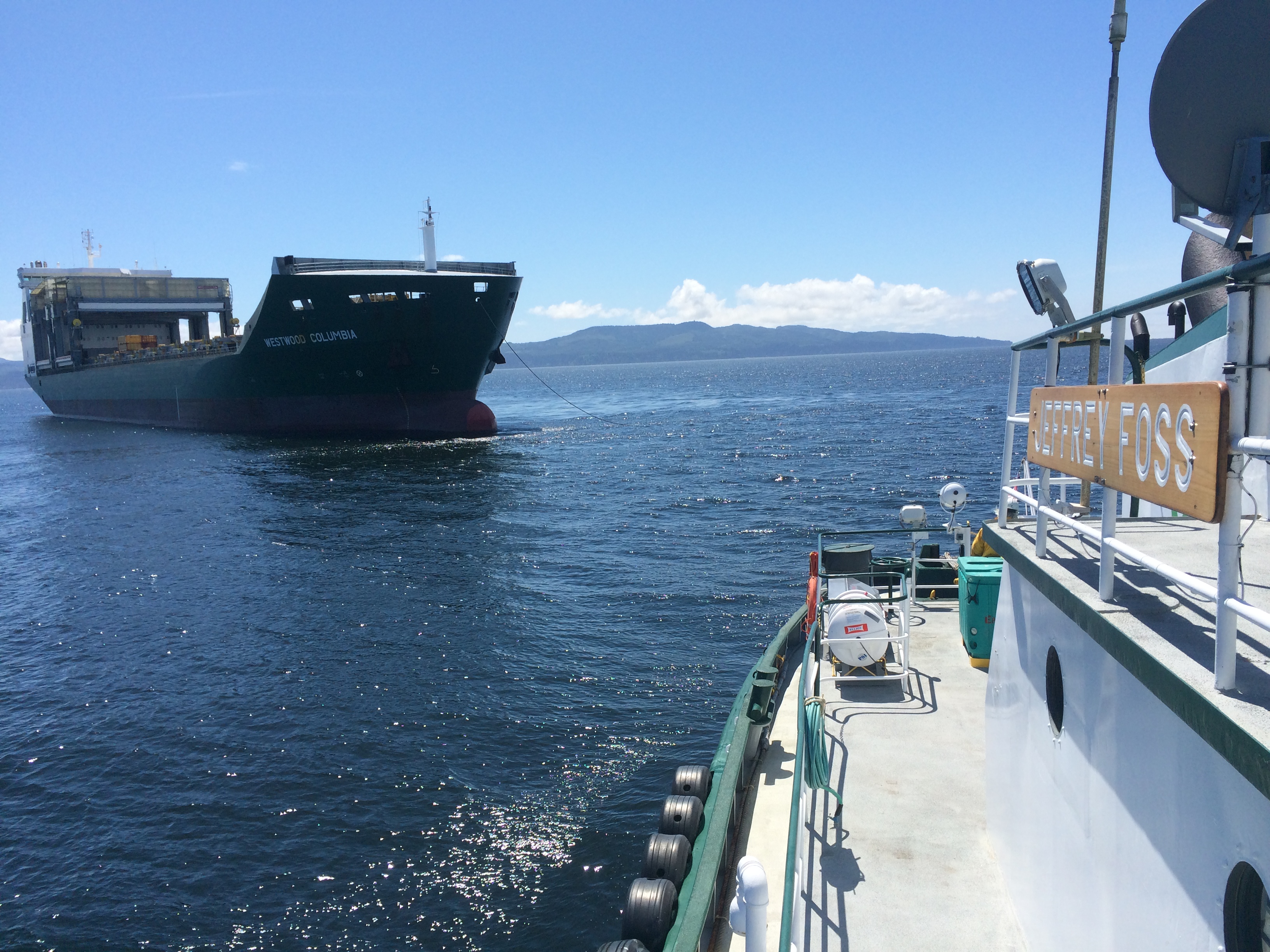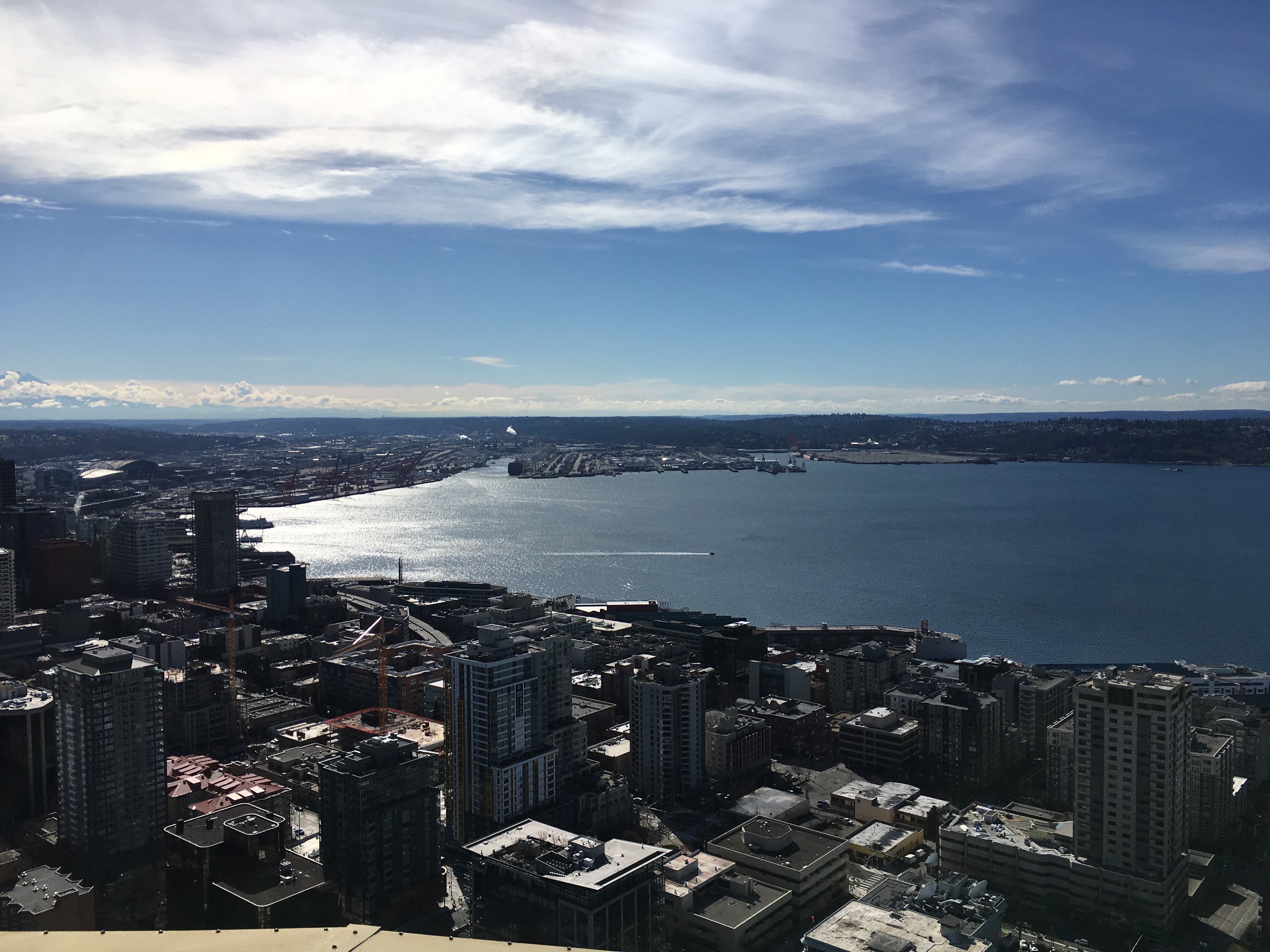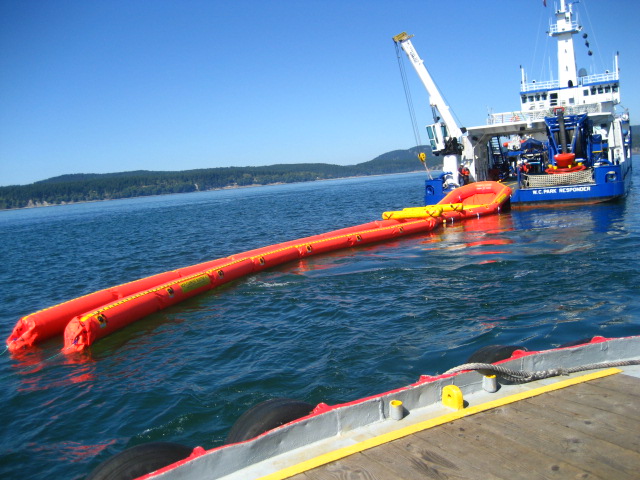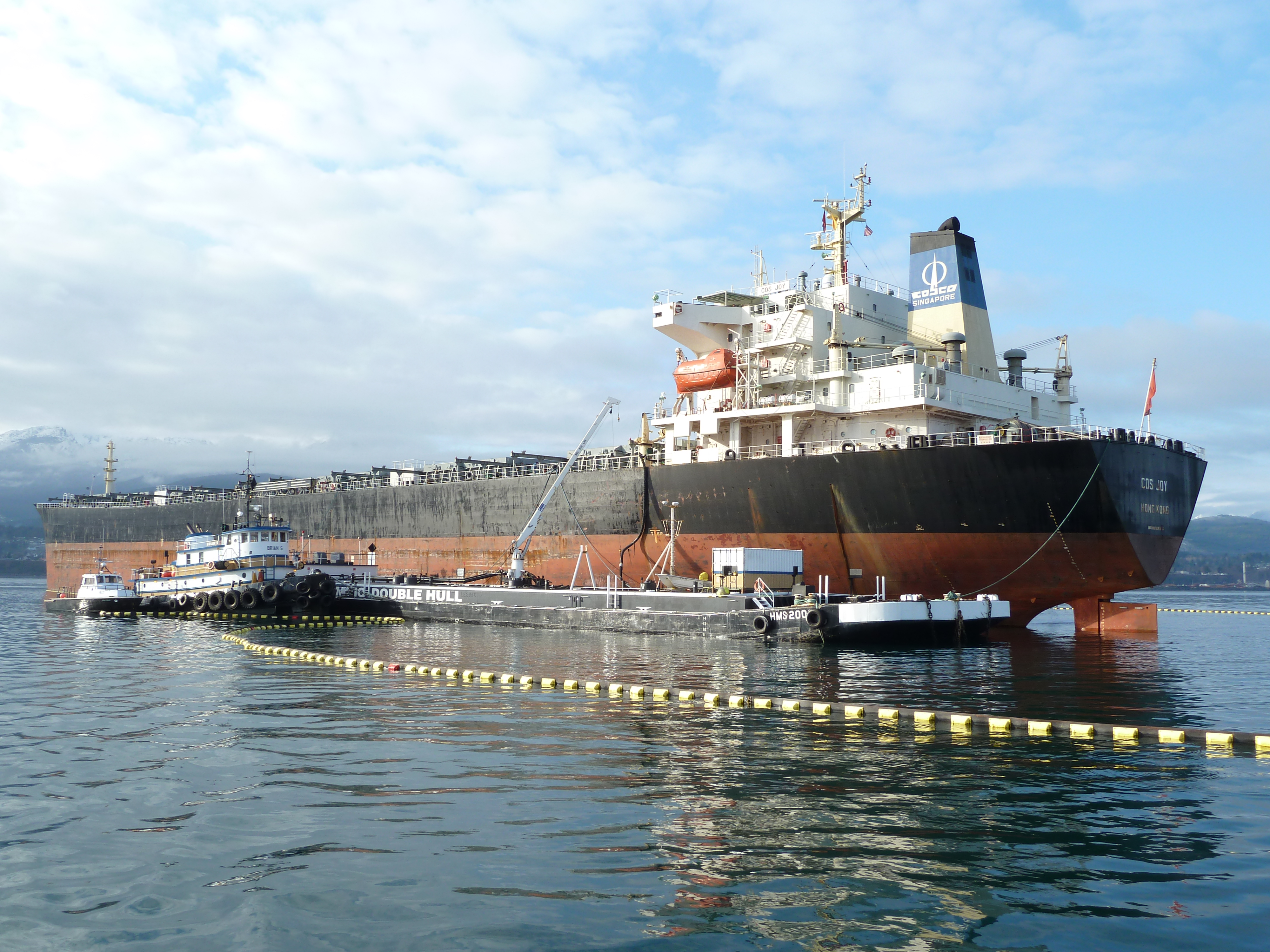
This blog is a joint publication from the American Waterways Operators (AWO) and Ecology’s Spill Prevention, Preparedness and Response Program.
In the 1980s, several major oil spills spurred the marine oil transportation industry and state regulators to overhaul industry practices and spill response regulations. Over the past 30 years, that work has evolved, leading to historically strong oil spill prevention, preparedness, and response capability and a dramatic reduction in oil spills.
Shortly after the Nestucca barge spill near Grays Harbor in March 1989, the oil tanker Exxon Valdez spilled over 11 million gallons of crude oil into Prince William Sound in Alaska. Congress responded by enacting the Oil Pollution Act of 1990 (OPA-90), which established a comprehensive framework for oil spill prevention, preparedness, and response actions by operators and regulators to eliminate oil spills. Responders clean oil off a beach in Prince William Sound, Alaska in 1989
That strong state/industry partnership continues today, and is key to advancing Washington’s zero-spills goal, along with improved international standards, federal regulations, innovation by industry, and robust partnerships with tribes and stakeholders. Together, we've created a system admired and emulated throughout the world with one of the lowest spill volumes in the nation.
New practices and technology
OPA-90 set new standards for safety and construction, strengthened federal oversight of the tank vessel industry, and improved coordination between state and federal authorities. This regulatory coordination — coupled with industry action and increased awareness and engagement by tribes and stakeholders — led to significant improvements in equipment, navigation technology, and safety management. The law also mandated double-hulls for all U.S.-flag tank vessels to reduce oil spill risks, authorized use of the Oil Spill Liability Trust Fund to pay for spill responses, and required area contingency plans in case spills happen.
In addition to OPA-90, Washington law requires tankers loaded with oil to be escorted by a tug; similar requirements are in place for Canadian waters. Foreign vessels visiting U.S. and Canadian ports require licensed maritime pilots. The tug Andrew Foss near a larger vessel.
The U.S. towing fleet has also made great strides, including enhanced safety standards, technology improvements, and industry best practices like the widely-adopted use of the “Orville Hook” device to retrieve a lost barge at sea, leading to remarkable results. More than 25 years ago, the U.S. Coast Guard formed a partnership with the towing industry trade association — American Waterways Operators (AWO) — to stop spills, prevent injuries and fatalities, and improve safety practices. The partnership has since produced more than 40 cooperative initiatives, and has facilitated the close collaboration between the Coast Guard and the towing industry that helped bring about the passage of federal legislation for a new regulatory and inspection regime for U.S. towing vessels (46 CFR Subchapter M).
This legislation set important safety standards for the domestic maritime industry, many of which were already in place through the Responsible Carrier Program (RCP), a safety management system developed by AWO and required for membership in the association. The RCP and the legislation require inspections and audits for vessels and shoreside operations.
Vessel design standards and operational requirements have evolved over the years, creating a highly sophisticated and safer U.S.-flagged fleet. Legislation went further by requiring system redundancies for propulsion and steering, in addition to alarm systems, to ensure mariners have situational awareness of all operations during their watch.
Navigation technology has advanced as well. Two important features of navigational safety in the Salish Sea are the Cooperative Vessel Traffic Service (CVTS) and the Automatic Identification System. The CVTS is jointly administered by the U.S. and Canadian Coast Guards. The U.S. and Canadian vessel traffic service centers monitor vessel movements, keep mariners informed, make recommendations to vessel operators and, when needed, direct vessel actions.
International standards and federal regulations require certain vessels to carry Automatic Identification System equipment. Vessels with this equipment transmit information including their identity, type, position, course, speed, and navigational status. Vessels and shore stations can display this information, increasing awareness.
Local partnerships
In 1999, Washington established the emergency rescue tug at Neah Bay to aid distressed vessels during the winter months. By 2008, the Legislature committed $3.6 million to fund a full-time, year-round tug. In 2010, it passed legislation requiring vessels using the shipping lanes to pay for the tug program with the Marine Exchange of Puget Sound providing administrative services. The Port of Seattle as seen from the Space Needle.
The Puget Sound Harbor Safety Committee and other marine safety forums bring mariners and regulators together to implement best practices to prevent oil spills and wrecks. In 2014, the Harbor Safety Committee implemented a standard of care for vessels transiting Rosario Strait in Puget Sound. This standard encourages tugs towing barges to notify the Puget Sound Vessel Traffic Service during transit so vessels are monitored more closely. In 2020, towing vessel operators and Puget Sound vessel pilots created a new Harbor Safety Committee standard of care to ensure that tugboats meet their ratings for towing power.
International efforts
At the international level, the Canada-United States Joint Marine Pollution Contingency Plan outlines how the United States and Canada will collaborate and pool knowledge and resources to prevent and respond to oil spills in international boundary waters. The U.S. Coast Guard, Canadian Coast Guard, Ecology, and B.C. Ministry of the Environment routinely conduct exercises to coordinate prevention, preparedness planning, and response activities.
Additionally, the U.S. Coast Guard and Transport Canada administer the Port State Control Program, an international protocol for ensuring that ships comply with all applicable international marine safety agreements. This program aims to identify substandard or noncompliant vessels and prevent them from using regional ports.
Current work
Of course the least damaging, and least expensive spill to clean up is the one that doesn’t happen. With that in mind, the state, along with industry and other stakeholder and tribal partners, continue to pursue prevention measures to ensure a spill like the Nestucca never happens again in our waters. An oil spill exercise including boom deployment.
In 2018, the Legislature passed the Strengthening Oil Transportation Safety Act. In response to a recent increase in transport of oils that sink in the water, parts of that act direct Ecology to pursue new requirements for non-floating oils. Response and preparedness capabilities also need to increase to match this new hazard.
Ecology is also developing an oil spill risk model that the Legislature has directed to be used in two initial analysis projects: an evaluation of tug escorts for specified types of tank vessels, and an assessment of oil risk reductions that could be provided by an emergency response towing vessel for Haro Strait, Boundary Pass, and Rosario Strait.
The risk of a major oil spill today is smaller than in the past, but the risk is never zero. Through a shared commitment to oversight, vigilance, and continuous improvement, Ecology, partner agencies, tribes, industry, response organizations, environmental groups, and stakeholders work together to prevent spills, and prepare and respond if one does occur. Today, Washington has one of the lowest oil spill rates in the nation, and the hard work and strength of our partnerships help limit the chance we will face a major spill in the northwest again.



